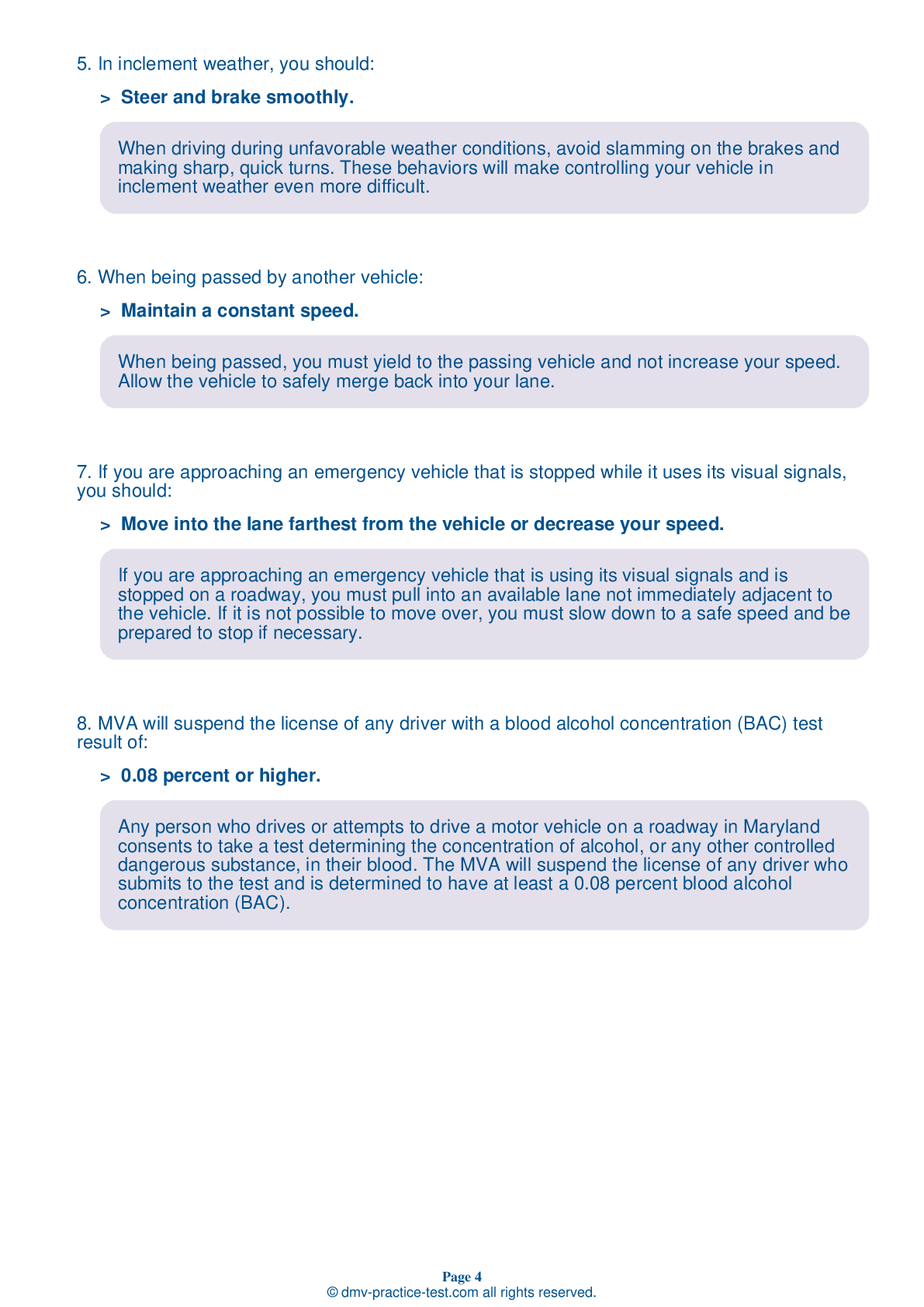FREE Maryland DMV Practice Test #22 Page 3 of 3
Maryland DMV practise examinations have been updated for January 2025. It includes questions based on the Maryland Driver Handbook's most essential traffic signals and regulations for 2025. Use actual questions that are very similar (often identical!) to the DMV driving permit test and driver's licence exam to study for the DMV driving permit test and driver's licence exam.
On the practise exam, each question gets a tip and explanation to help you remember the concepts. The written component of the official Maryland DMV test will include questions about traffic rules, traffic signs, and driving statutes, as well as knowledge from the Driver Handbook.
To obtain a passing grade, you must correctly answer 22 of the 25 questions. Take our DMV practise exam to help you prepare for your Maryland instruction permit or driver's licence.
The DMV exam is available in several languages.
Using any kind of testing assistance will result in an automatic fail, and the DMV may take additional action against your driver's licence, so stay away from it.
17 . Temporary signs used in construction and maintenance work areas:
All temporary signs in work zones have orange backgrounds with black writing and/or symbols.
18 . You should increase the distance between your vehicle and the vehicle ahead when you:
When being tailgated, create extra space in front of your vehicle and do not brake suddenly. Slow down gradually or merge into another lane to prevent a collision with the tailgater.
19 . When passing another car, you have enough space to return to the driving lane:
Before you return to the driving lane when completing a pass, be sure there is a safe gap between your vehicle and the passed vehicle. When you can see both headlights of the vehicle in your rearview mirror, it is safe to return to the driving lane.
20 . Reaction time is slower after:
Alcohol slows your reflexes and reaction time, reduces your ability to see clearly, and makes you less alert. As the amount of alcohol in your body increases, your judgment worsens and your driving skills decrease. You will have trouble judging distances, speeds, and the movement of other vehicles.
21 . If you are traveling in dangerously thick fog, it may be a good idea to:
When driving in fog, you should decrease your speed and use your low beam headlights. If you are caught in thick fog that lowers visibility and creates conditions that are too dangerous for driving, you should safely pull off the road and park while using your four-way emergency flashers.
22 . This road sign means:

Warning signs provide notice to road users of a situation that might not be readily apparent and are usually yellow with black markings. This sign warns drivers to be careful when driving under wet conditions as the pavement will become slippery and more difficult to navigate safely.
23 . A steady yellow traffic signal light is a warning that the light is about to change to red. If you are already within the intersection when a green light changes to yellow, you should:
If you are already within an intersection when the traffic light turns yellow, you should clear the intersection as quickly as possible.
24 . It is unsafe for a child under the age of ____ to ride in the front seat of a passenger vehicle.
Children under the age of 13 should ride buckled up in a rear seat, in an appropriate child safety seat, or a seat belt. For best protection, they should not ride in the front seat near the airbag.
25 . At a stop sign, you:
When approaching a stop sign, a driver must come to a complete stop before proceeding. After stopping, when it is safe to do so, the driver may then continue through the intersection.
2025 Maryland | Frequently Asked Questions
1. Be at least 15 years and 9 months old.
2. Pass the vision exam.
3. Complete the Maryland MVA Online Driver Test Tutorial.
4. Pass the knowledge test.
5. Provide proof of identity, age, and Maryland residency.
6. Have a parent or guardian co-sign your application.
7. Pay the required fee.
Remember, you must hold your learner's permit for nine months before you can take the driving test.



